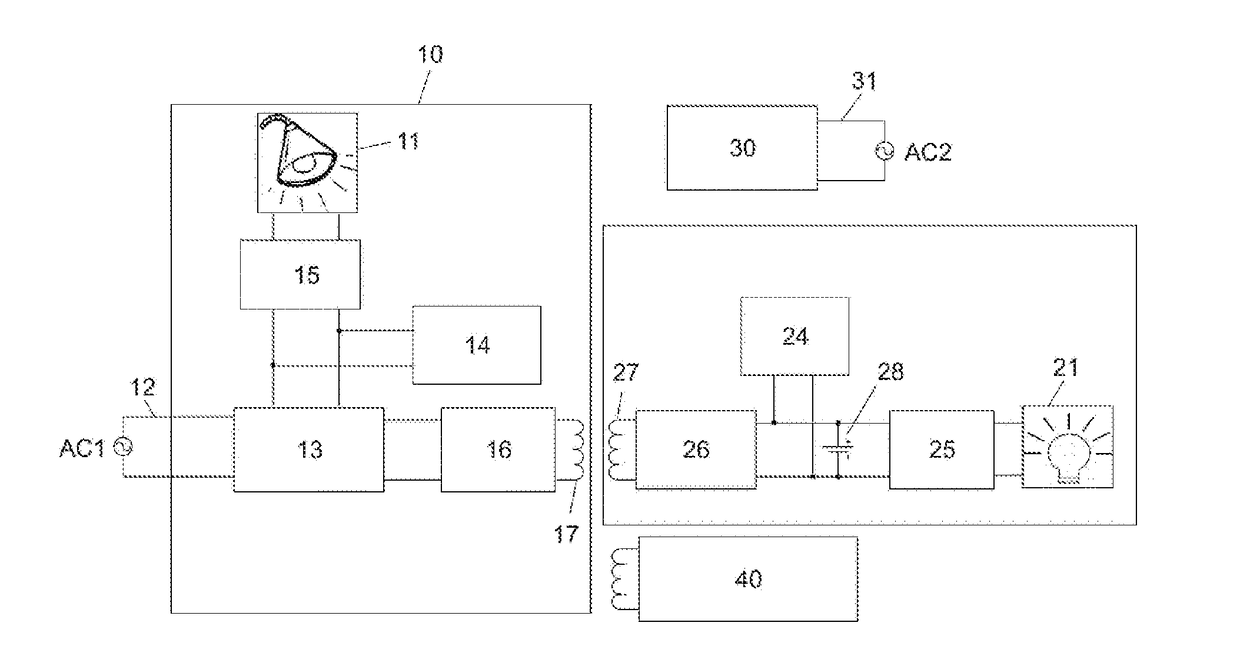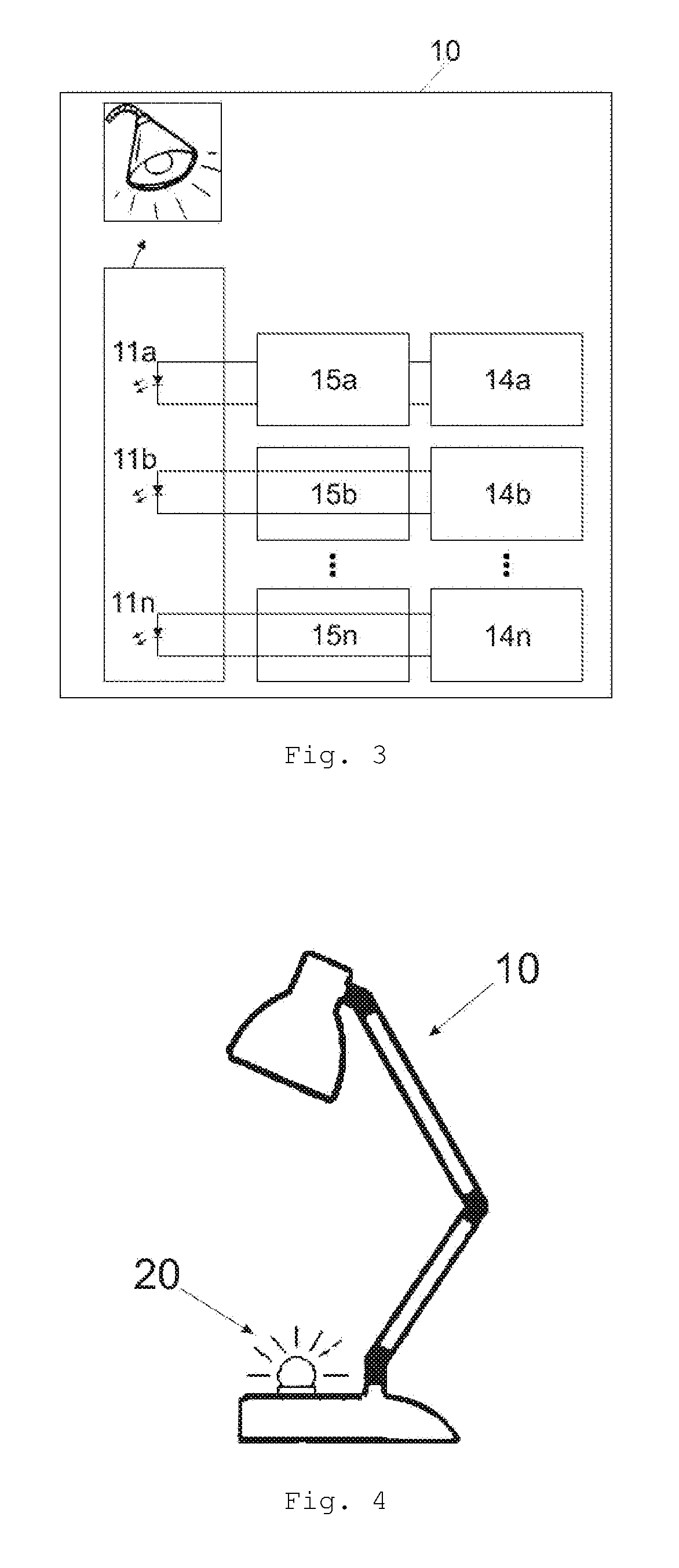Lighting system with wireless power supply
a wireless power supply and wireless power supply technology, applied in the direction of electrical equipment, electric vehicles, lighting and heating apparatus, etc., can solve the problems of insufficient flexibility of previously known wireless power supply systems, limited applicability of inductive wireless power transfer, etc., and achieve the effect of a higher degree of flexibility in positioning
- Summary
- Abstract
- Description
- Claims
- Application Information
AI Technical Summary
Benefits of technology
Problems solved by technology
Method used
Image
Examples
first embodiment
[0048]FIG. 2 shows a schematic view of the RF wireless power transfer part of the primary luminaire 10 that allows more than 2 W of electrical power to be transmitted via RF wireless power transfer. Other parts of the primary luminaire 10 are not shown in this drawing, but can of course still be present.
[0049]The RF wireless power receiver comprises multiple RF wireless power receiver units 14a, 14b, . . . , 14n. Each of the RF wireless power receiver units 14a, 14b, ..., 14n can receive up to 2 W of electrical power. The power received by the RF wireless power receiver units 14a, 14b, . . . , 14n can be stored in an energy storage unit 18 (here shown as a capacitor) to which the RF wireless power receiver units 14a, 14b, . . . , 14n are connected in parallel. The luminaire 10 further comprises a DC current converter 15 for converting the current provided by the energy storage unit 18 into a current suitable for operating the light source 11. While any number of RF wireless power re...
second embodiment
[0050]FIG. 3 shows a schematic view of the RF wireless power transfer part of the primary luminaire 10 that allows more than 2 W of electrical power to be transmitted via RF wireless power transfer. Other parts of the primary luminaire 10 are not shown in this drawing, but can of course still be present.
[0051]The RF wireless power receiver in this embodiment comprises multiple RF wireless power receiver units 14a, 14b, . . . , 14n. Each of the RF wireless power receiver units 14a, 14b, . . . , 14n can receive up to 2 W of electrical power. Each RF wireless power receiver unit 14a, 14b, . . . , 14n is connected to an associated DC current converter 15a, 15b, . . . , 15n which, in turn, is connected to an associated light source 11a, 11b, . . . , 11n. The output current of each RF wireless power receiver unit 14a, 14b, . . . , 14n is converted by the respective DC current converter 15a, 15b, ..., 15n into a current suitable for operating the respective light source 11a, 11b, ..., 11n....
PUM
 Login to View More
Login to View More Abstract
Description
Claims
Application Information
 Login to View More
Login to View More - R&D
- Intellectual Property
- Life Sciences
- Materials
- Tech Scout
- Unparalleled Data Quality
- Higher Quality Content
- 60% Fewer Hallucinations
Browse by: Latest US Patents, China's latest patents, Technical Efficacy Thesaurus, Application Domain, Technology Topic, Popular Technical Reports.
© 2025 PatSnap. All rights reserved.Legal|Privacy policy|Modern Slavery Act Transparency Statement|Sitemap|About US| Contact US: help@patsnap.com



